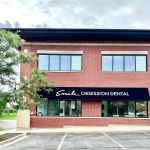Early Detection Methods for Periodontal Disease: What You Need to Know
- Understanding Periodontal Disease
- Symptoms to Watch For
- The Importance of Early Detection
- Diagnostic Methods for Periodontal Disease
- Treatment Options After Early Detection
- How to Prevent Periodontal Disease
Understanding Periodontal Disease
Periodontal disease, commonly referred to as gum disease, is a progressive condition that affects the gums and surrounding tissue of the teeth. It is primarily caused by bacterial infection, often resulting from poor oral hygiene. If left untreated, periodontal disease can lead to tooth loss and more serious health complications. Early detection is crucial for preventing these severe outcomes and preserving oral health. By understanding how the disease develops, individuals can better recognize warning signs and seek timely treatment.
Initially, periodontal disease presents as gingivitis, which is the inflammation of the gums. If not addressed, it can evolve into periodontitis, where the inflammation extends deeper into the gum tissue and bone, leading to significant damage. The longer the disease is left undiagnosed, the more difficult it is to treat effectively.
Symptoms to Watch For
Recognizing the symptoms of periodontal disease early on is key to ensuring that treatment can be started before the condition worsens. Here are some common signs to watch for:
- Red, swollen, or bleeding gums: One of the first signs of gum disease is gums that bleed easily when brushing or flossing. Swollen or red gums are also common symptoms.
- Bad breath (halitosis): Persistent bad breath, especially if it doesn’t go away with regular brushing, can indicate an infection in the gums.
- Receding gums: If the gums begin to pull away from the teeth, this can create pockets where bacteria thrive, leading to further gum damage.
- Loose teeth: As periodontal disease progresses, the gums and bones supporting the teeth may become so damaged that teeth begin to loosen.
- Pain while chewing: Difficulty or pain while chewing food is often a sign of an advanced stage of periodontal disease.
The Importance of Early Detection
Early detection of periodontal disease is essential for several reasons. When caught early, gingivitis can typically be reversed with professional cleaning and improved home care. However, if periodontal disease progresses to more advanced stages, it can cause irreversible damage to the gums and bone structure that supports the teeth.
One of the most concerning aspects of periodontal disease is that it often progresses without obvious symptoms, especially in its early stages. This makes it easy to overlook until significant damage has already been done. Therefore, early detection is crucial for preventing the need for more invasive treatments like gum surgery or tooth extraction.
Furthermore, periodontal disease has been linked to other serious health conditions, including heart disease, diabetes, and stroke. By identifying and treating periodontal disease early, individuals not only protect their teeth and gums but also reduce the risk of complications affecting their overall health.
Diagnostic Methods for Periodontal Disease
There are several methods that dental professionals use to detect periodontal disease in its early stages. Regular dental checkups are the first step in identifying potential issues before they become severe. Here are the most common diagnostic methods:
1. Clinical Examination
During a routine dental exam, your dentist will examine your gums for signs of inflammation, redness, bleeding, and recession. They will also check for pockets between your gums and teeth. Healthy gums should have a pocket depth of around 1-3 millimeters, while deeper pockets may indicate the presence of periodontal disease.
2. X-rays
X-rays are an essential tool for detecting the damage that periodontal disease can cause beneath the surface. They allow your dentist to view the condition of the bone supporting your teeth, helping to identify bone loss that may not be visible during a visual exam.
3. Periodontal Probing
In addition to visual exams and X-rays, a periodontal probe is often used to measure the depth of the pockets between the gums and teeth. Probing helps determine the severity of the gum disease and whether there is any significant damage to the bone structure.
Treatment Options After Early Detection
Once periodontal disease is detected, the treatment plan will depend on the severity of the condition. Early-stage gingivitis can usually be reversed with professional cleaning and improved oral hygiene practices. For more advanced cases, deeper cleaning methods may be required.
1. Scaling and Root Planing
For patients with periodontitis, scaling and root planing is often the first line of treatment. This procedure involves the removal of plaque and tartar buildup from above and below the gumline. It also smooths the surfaces of the teeth roots to help the gums reattach to the teeth.
2. Surgical Treatment
In more severe cases, surgery may be required to restore the gums and bone. Surgical treatments such as flap surgery or bone grafts can help to correct gum recession and regenerate bone loss caused by advanced periodontal disease.
How to Prevent Periodontal Disease
Prevention is always better than cure when it comes to periodontal disease. Maintaining a consistent oral care routine is the best way to prevent gum disease from developing. Here are some tips to help protect your gums:
- Brush and floss regularly: Brushing twice a day and flossing daily can help remove plaque and bacteria that cause gum disease.
- Visit your dentist regularly: Regular dental checkups and cleanings are crucial for catching potential problems early.
- Quit smoking: Smoking is a major risk factor for periodontal disease, so quitting can significantly reduce your risk.
- Eat a healthy diet: Eating a balanced diet with plenty of fruits and vegetables can help keep your gums and teeth healthy.







 Renaissance Aesthetic Dentistry4.0 (511 review)
Renaissance Aesthetic Dentistry4.0 (511 review) Brick Dental Studio4.0 (101 review)
Brick Dental Studio4.0 (101 review) Smile Obsession South Naperville5.0 (119 review)
Smile Obsession South Naperville5.0 (119 review) Dr. Susan R. Richardson Overstreet, DDS4.0 (1 review)
Dr. Susan R. Richardson Overstreet, DDS4.0 (1 review) Bright Now! Dental & Orthodontics3.0 (191 review)
Bright Now! Dental & Orthodontics3.0 (191 review) Greenway Family Dental4.0 (137 review)
Greenway Family Dental4.0 (137 review) The Importance of Oral Health Education During Pregnancy for a Healthy Pregnancy
The Importance of Oral Health Education During Pregnancy for a Healthy Pregnancy Best Tips for Brushing Your Teeth Properly for Healthy Gums: Essential Techniques for Oral Health
Best Tips for Brushing Your Teeth Properly for Healthy Gums: Essential Techniques for Oral Health Why Skipping Dental Checkups Can Lead to Bigger Oral Health Problems
Why Skipping Dental Checkups Can Lead to Bigger Oral Health Problems Advantages of Porcelain Dental Restorations
Advantages of Porcelain Dental Restorations How Can Diabetes Cause Tooth and Gum Problems? Preventing and Managing Oral Health Issues
How Can Diabetes Cause Tooth and Gum Problems? Preventing and Managing Oral Health Issues Healthy Habits for Promoting Good Oral Health and Hygiene: Tips for a Healthy Smile
Healthy Habits for Promoting Good Oral Health and Hygiene: Tips for a Healthy Smile